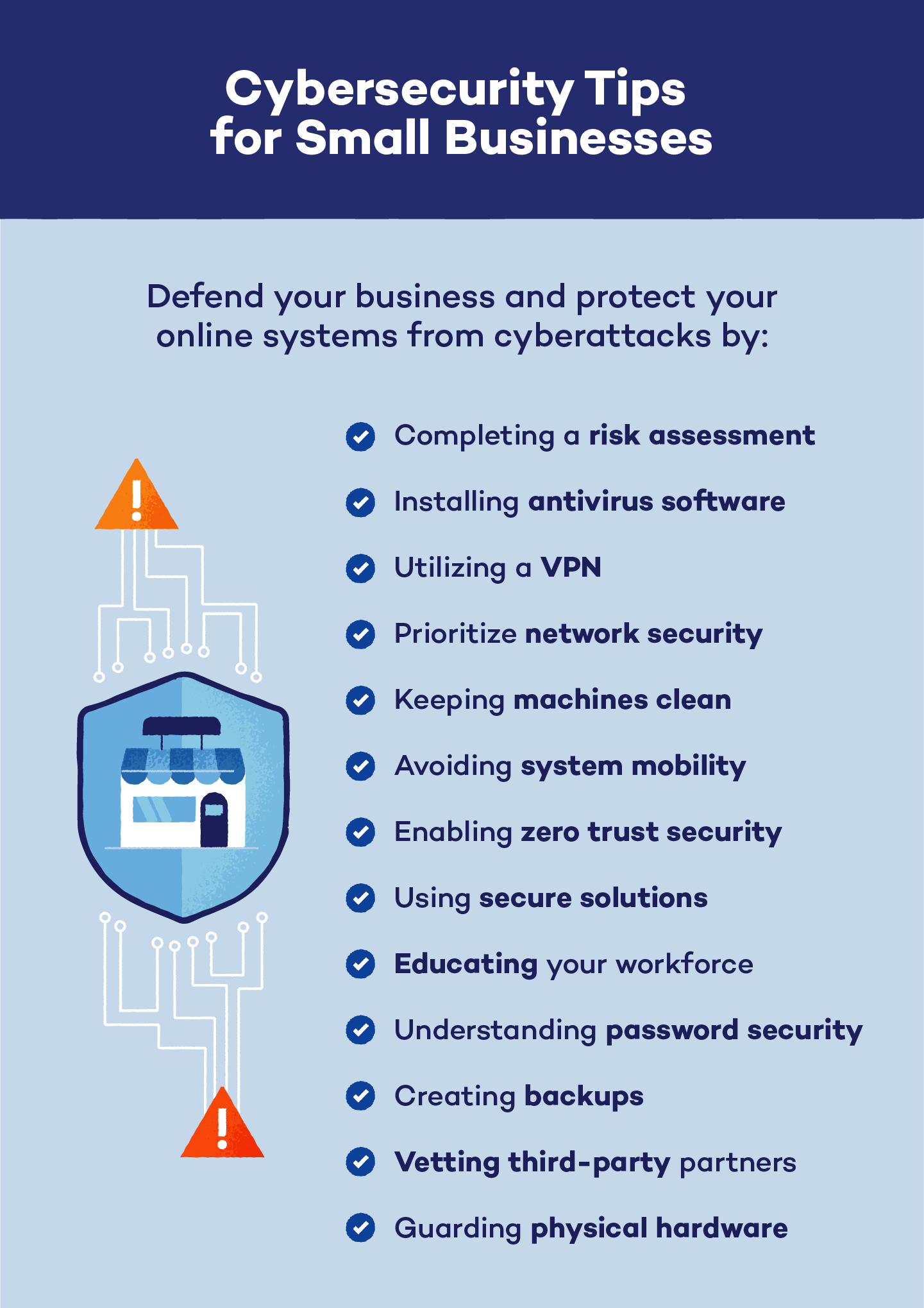In today’s digital world, cybersecurity is not optional—it’s a necessity. Cyber threats are evolving, targeting businesses of all sizes, and the consequences of a breach can be devastating. This guide provides practical and actionable cybersecurity tips to help businesses protect their sensitive data and maintain customer trust.
1. Conduct Regular Risk Assessments
Understanding your vulnerabilities is the first step to strengthening cybersecurity.
Key Actions:
- Identify critical assets and potential risks.
- Evaluate the effectiveness of current security measures.
- Create a risk management plan.
2. Implement Strong Password Policies
Weak passwords are one of the easiest entry points for hackers.
Best Practices:
- Require passwords to be at least 12 characters long.
- Use a mix of uppercase, lowercase, numbers, and special characters.
- Encourage the use of password managers.
3. Train Employees on Cybersecurity
Human error is a leading cause of cyber incidents.
Training Focus:
- Recognizing phishing attempts.
- Safe internet browsing habits.
- Importance of regular software updates.
4. Use Multi-Factor Authentication (MFA)
Adding an extra layer of security can prevent unauthorized access.
Benefits:
- Protects accounts even if passwords are compromised.
- Reduces the risk of identity theft.
- Easy to implement with apps like Google Authenticator.
5. Keep Software and Systems Updated
Outdated software is a common vulnerability exploited by attackers.
Steps to Take:
- Enable automatic updates where possible.
- Regularly review and update software and hardware.
- Replace unsupported systems.
6. Secure Your Network
A strong network is the backbone of cybersecurity.
Network Security Tips:
- Use firewalls to block unauthorized traffic.
- Encrypt data in transit with VPNs.
- Separate guest and business networks.
Also Read: Latest Tech Trends 2025: Transforming the Future
7. Back Up Data Regularly
Data backups can save your business in case of ransomware attacks or system failures.
Backup Strategy:
- Use the 3-2-1 rule: 3 copies, 2 different media, 1 off-site.
- Test backups periodically.
- Encrypt backup files for added security.
8. Monitor and Detect Threats
Early detection can minimize the damage of a cyber attack.
Tools to Use:
- Intrusion detection systems (IDS).
- Security information and event management (SIEM) tools.
- Regular log reviews.
9. Develop an Incident Response Plan
Preparation is key to minimizing downtime and losses during an attack.
Plan Components:
- Clear roles and responsibilities.
- Communication strategies for stakeholders.
- Steps for containment, eradication, and recovery.
10. Work with Cybersecurity Experts
Sometimes, professional guidance is essential.
How They Help:
- Conducting comprehensive security audits.
- Providing tailored solutions.
- Offering 24/7 monitoring and support.
Summary Table: Cybersecurity Tips at a Glance
| Tip | Action | Benefit |
|---|---|---|
| Risk Assessments | Identify vulnerabilities | Prioritize security efforts |
| Strong Password Policies | Use complex, unique passwords | Prevent unauthorized access |
| Employee Training | Educate on threats and best practices | Reduce human error |
| Multi-Factor Authentication | Add an extra security layer | Protect accounts from breaches |
| Software Updates | Regularly update systems | Close known vulnerabilities |
| Secure Networks | Use firewalls and encryption | Safeguard data in transit |
| Data Backups | Follow the 3-2-1 rule | Ensure business continuity |
| Threat Monitoring | Use IDS and SIEM tools | Detect attacks early |
| Incident Response Plan | Prepare for potential breaches | Minimize downtime and losses |
| Cybersecurity Experts | Seek professional help | Strengthen overall security |
Conclusion
Cybersecurity is a critical investment for businesses of all sizes. By implementing these cybersecurity tips for businesses, companies can build a robust defense against cyber threats, protect sensitive data, and maintain customer trust. Staying proactive and informed is the key to thriving in an increasingly digital world.










